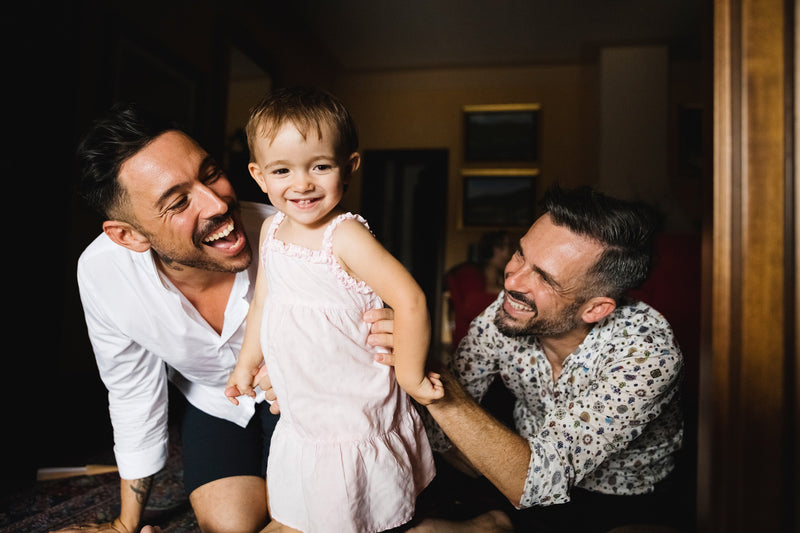
Trade Time-Out for Time-In
Coach Your Toddler to Better Behavior by Keeping Them Close

When you think about it, parents and coaches have a lot in common:
+ Both help their players get better at the game (of soccer, football - or, you know, LIFE).
+ Both serve as guides and mentors, helping solve problems and see the big picture.
+ Both have a tendency to use quotes and inspirational speeches as motivators.
But a biiiiiiiiig difference between parents and coaches—besides the obvious lack of a paycheck and championship rings—is the way they approach the concept of time-outs.
Picture a sporting event with us for a moment. Now, look over to the sideline as the coach calls a time-out. What do you see?
Well, there’s the coach bringing the team into a huddle. He’s kneeling down in the middle of them. Oh, there’s his trusty whiteboard. Looks like he’s explaining something to them, giving them a new play, and now he’s getting them hyped to go back out on the field.
Nothing out of the ordinary or unusual there.
But what if we replay the scenario with one small change?
This time, the coach calls time-out, and as soon as the players arrive on the sideline, he sends them all to different places in the stadium.
Well, that’s weird. Didn’t he call the time out to help his team regroup? How are they going to know what to do if he doesn’t tell them?
Now the team is back on the field and making the same mistakes. This makes exactly ZERO SENSE.
And yet, isn’t this second scenario exactly how we, as parents, use time-outs?
Our kid misbehaves, and instead of “bringing it in,” we send them away with instructions to “think about what they did” and learn what to do instead.
Uggggggh. We know it feels like we just intercepted your go-to discipline strategy. And we totally understand if you want to throw a flag for unnecessary roughness. But before you do, promise you’ll give us a chance to explain where we’re coming from?!
The Problem with Time-Outs
When you send your kid to time-out, we can guarantee they aren’t thinking about what they did wrong, because:
-
- Their brains are still under construction, unable to connect the dots between behavior and consequence.
- They’re distracted by something else in their time-out space, like the toys in their room, or jumping on the bed when you aren’t watching.
- They truly have NO CLUE what is going on. (Welcome to toddler brains: a mystery wrapped in an enigma.
To make matters worse, a time-out breeds loneliness, confusion, and anxiety in the moment. It tells toddlers their big feelings are not okay, and it introduces uncertainty into the parent-child relationship.
In short: Time-outs actually lead to MORE acting out. Basically, a time-out is like running the wrong way on the field and scoring for the other team.
But fear not, warrior-parent. We aren’t here to trade you to another team. YOU are the absolute best parent for your child. Instead, we’re going to show you how to embrace your role as the head coach of your family. It’s time to flip the script, and turn time-out into time-in.
Discipline is hard. We’re here to help.
Want to dive deeper into how to make time-ins a part of your parenting game-plan? Time-ins are just one of more than ten practical discipline strategies offered in our course, Winning the Toddler Stage. Become the confident expert in helping your toddler shift from unwanted behaviors to wanted behaviors, and make toddlerhood more enjoyable—for both of you!
Get Winning the Toddler Stage